Some of these tips might be familiar to long-time riders, but so many of our readers are new riders and/or new to touring. We believe this story will benefit them the most. If you’re a veteran rider, feel free to share your tips at the end of the story in the comments section.
1. Roll your clothes to maximize space in your motorcycle luggage. Rolling takes up less space than laying clothes flat.
2. Stuff T-shirts, socks, and underwear into your extra pair of boots to utilize every inch of empty space.
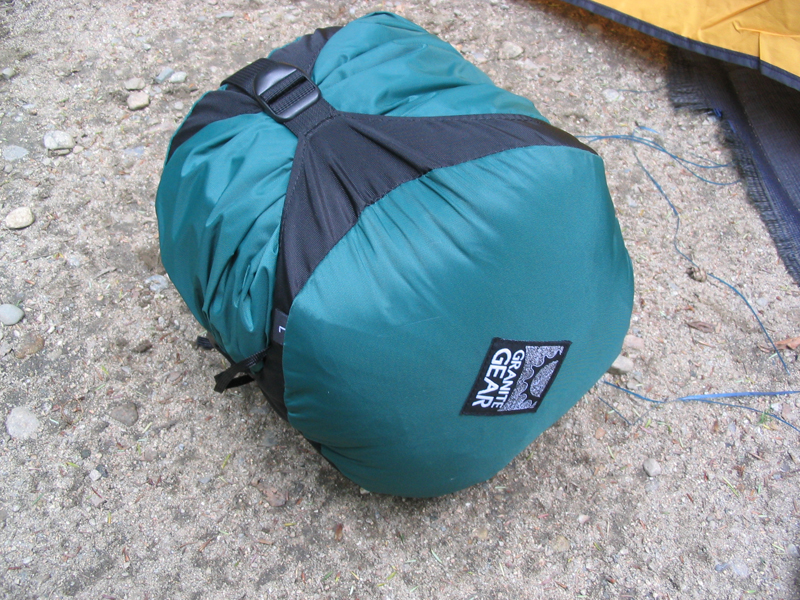
3. If you don’t have an extra pair of boots or have run out of small spaces to stuff items into, put those items in a baggie and then compress the baggie to squeeze all the air out of it so it takes up little space in your big bag. Stuff sacks, like this one backpackers use, also work great at compressing items to a small size.
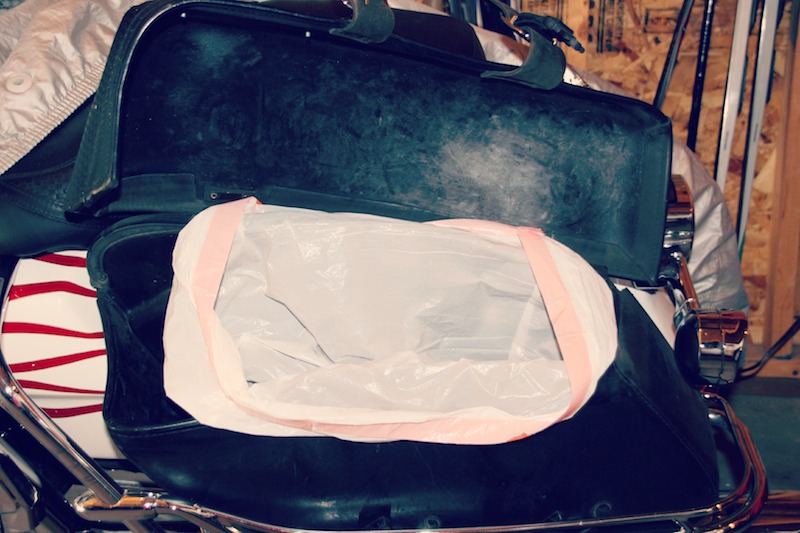
4. Use a large plastic garbage bag to line your backrest bag and other luggage so in case your bag gets wet your stuff inside stays dry. We line the bag even if its waterproof just to be safe. And instead of using fancy, expensive saddlebag liner bags, those white 13-gallon size bags, shown here, work great as a liner for large soft- and hard-sided saddlebags. The bag also allows you to empty your gear from the saddlebag all at once when you get to your location.
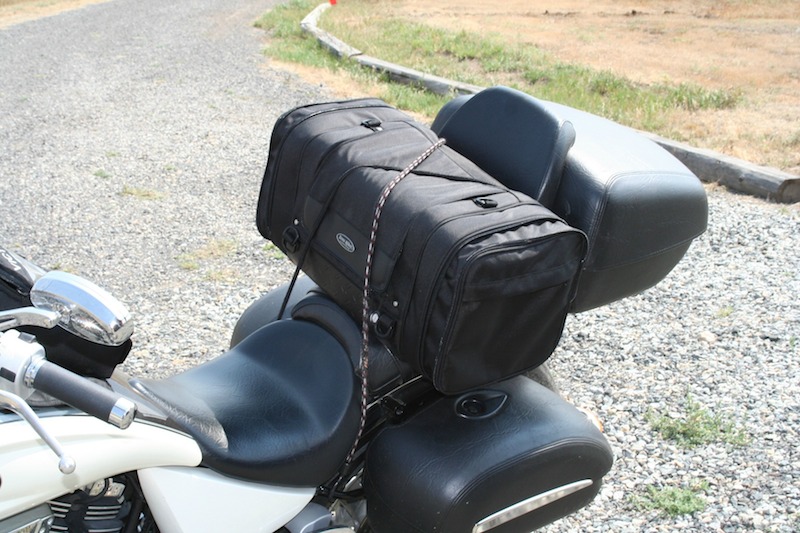
5. Always carry a few extra bungee cords with you, that is in addition to the ones you’re currently using, in case you lose one or two in the packing and unpacking of your motorcycle. Once you get your bags securely bungeed to the bike, try to remember which bungee cord goes where so you can duplicate the effort the next time you bungee your load. Its much quicker if you remember instead of having to go through the whole bungee exercise again, that is which one fits where! The bag shown here is from Dowco’s Iron Rider luggage collection reviewed here on WRN.
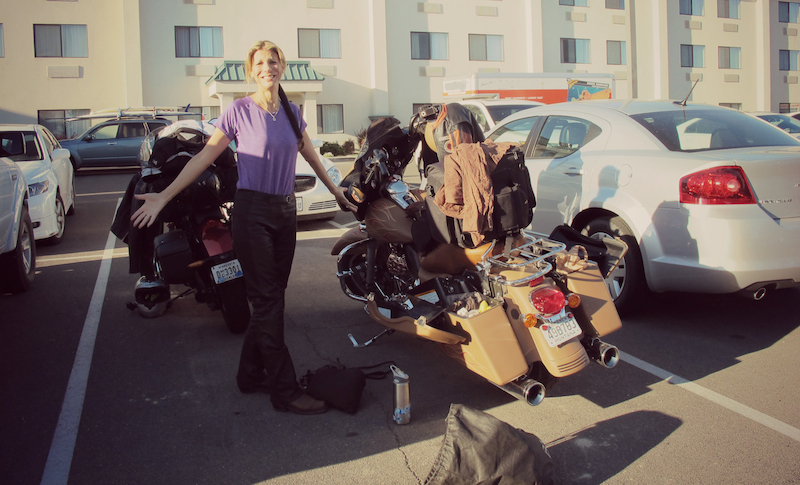 Women Riders Now editor Genevieve Schmitt in the midst of a motorcycle packing “exercise.”
Women Riders Now editor Genevieve Schmitt in the midst of a motorcycle packing “exercise.”6. Create a routine by keeping things in consistent, designated places. If you’re unorganized, you’ll be unpacking and packing every time you need to find something. Each item should be placed in the same spot every time you pack so you know exactly where it is when you need it.
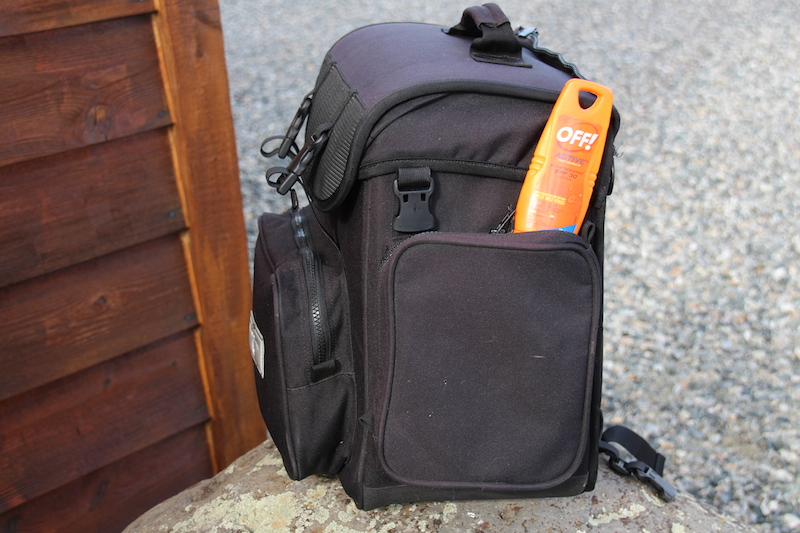
7. Always put items you might need to get at during your rest stop near the top of your bag or in a side pocket, like your camera, sunblock, meds, etc. The clothes you’ll wear three days from now can stay at the bottom of the bag.
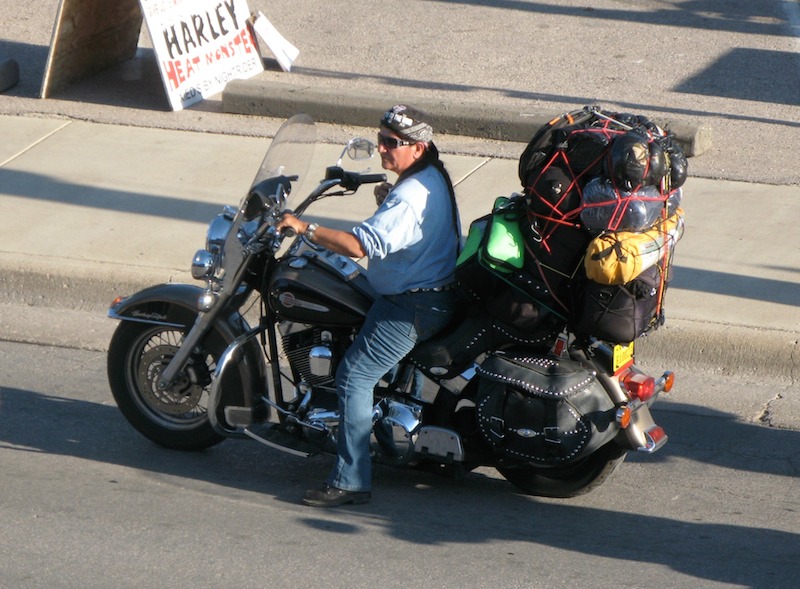 Hope this rider’s toothbrush is not at the bottom!
Hope this rider’s toothbrush is not at the bottom!8. Plan ahead when packing. If its going to take two days to get to your destination, when you’ll be unpacking your entire load, consider packing your overnight supplies in a small bag that you can keep someplace easily accessible. That way you can keep most of your stuff packed on the bike for that one night, as long as those items are securely locked.
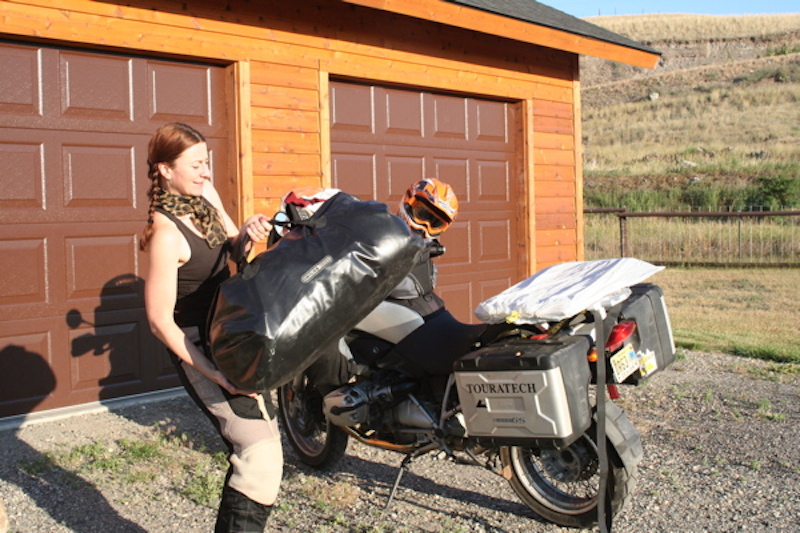
9. Keep electronics (iPad, Kindle, camera, etc.) in a locked bag (like a lockable saddlebag or lockable compartment on your motorcycle), and clothing and soft goods in the bags that you bungee to the bike. Always keep your cell phone on you while riding, like in a jacket pocket, in case you get separated from your motorcycle and need to call for help.
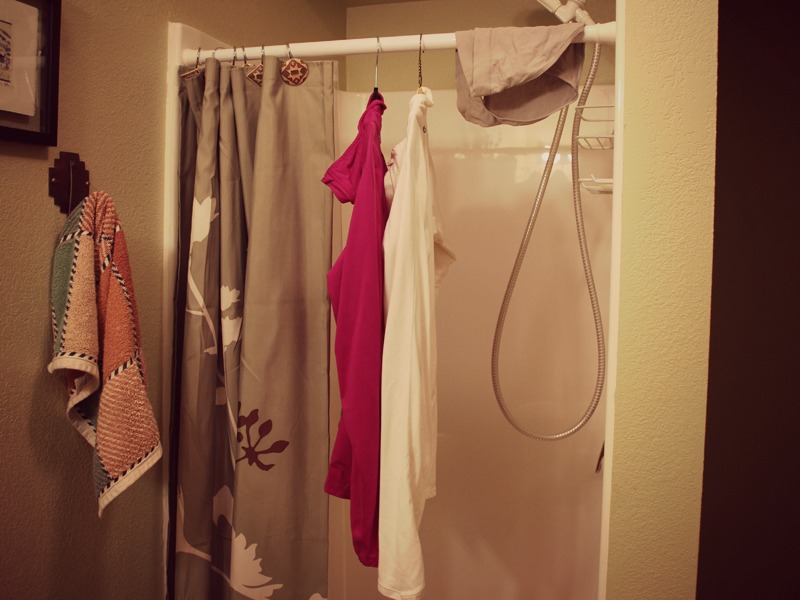
10. Reduce the amount you need to pack by bringing along laundry detergent (in a small travel size container) and washing your clothes along the way. Some clothing is actually designed to dry quickly, so you can hand-wash them in a hotel sink and hang to dry overnight.
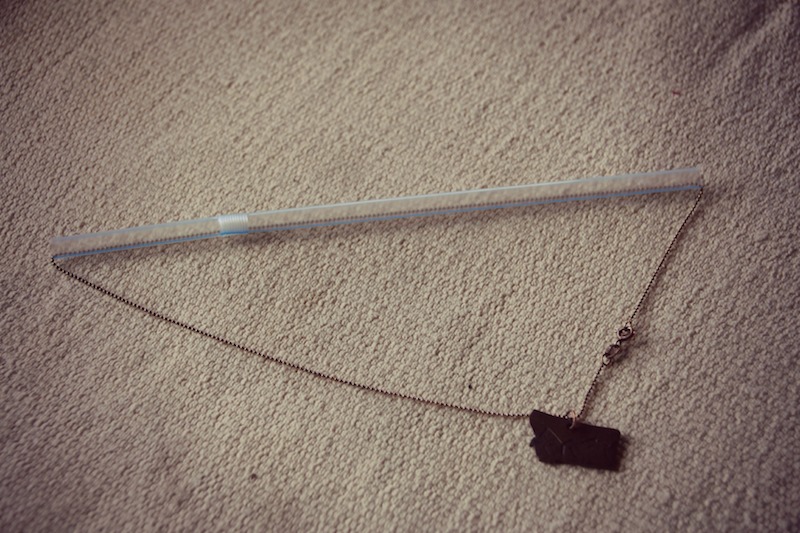
11. We can’t take credit for this tip that we found on the Internet, but it’s so ingenious we wanted to share. Thread a necklace through a straw to keep it from knotting up in your jewelry travel pouch. If the straw is too long, cut it to size.
in the comments below.
Related Articles
Luggage Rack for Solo Seat Motorcycles
Review: Dowco Iron Rider Luggage Collection
Fun Video of a Rider with Too Many Gadgets
Getting Loaded: 6 Tips to Pack Your Bike Safely

Loved the article. Here’s another tip. Put a Bounce dryer sheet in the bag you carry your clothes in. It will keep them smelling good. Also if you can’t do laundry at all your destinations and need to keep a few dirty things until you find a laundromat, put them in an extra garbage bag to keep away from your clean stuff. You can also put a dryer sheet in the dirty bag to help keep odors down.
Don’t forget a small round of duck tape, zip ties, and oil.
When you wrote “… try to remember which bungee cord goes where …”You can just take a picture of your load with your phone. That way, you don’t have to remember how you packed.
Good tip, Nancy!
When we travel we pack what we call throwaway under garments and socks. Then each day we throw away them. When we return home we have new undergarments and socks. Nice change. We also use the storage bags that flatten out and a bag duffle bag that drops to a flat square when empty.
Great tips! Love this article.
Good article. I liked the straw/necklace idea; I use spare buttons to store my earrings. I always pack a compact umbrella for sun protection as much as rain. I carry a pair of cheap flip flops in my saddlebag. I have a small, brightly colored bag to hold wallet, lipstick, reading glasses, etc. separate and easy to find in my saddlebag.
I put a few of the dry capsules found in pill bottles, in my bags. This keeps my clothes and other things from getting damp from the sun. I asked the local pharmacy to keep a big bag of them for me. They usually throw them away.
In cold and/or wet weather I wear exam gloves under my regular gloves. They keep my hands dry and warmer. I also write directions for the day on my windshield using a dry-erase marker. This way I don’t have to look down at the map in my tank bag, keeping my eyes on the road instead.
Some of my packing/riding guidelines are: Don’t pack anything that does not do double duty. Dental floss can be thread and baking soda can remove oil from your hands and makes great tooth paste. Clothes must all work interchangeably and all be the hand wash quick dry variety. Keep a list of the things you can’t do without and take the things you did without off the list the next time. Tools, tire repair/inflator and credit card are always on the can’t do without list. Extra boots, maybe not. If you have separate rain gear, pack it on the side of the bike away from the road when you pull off! If you ride in cold weather remember frozen road kill is like a fur covered brick.
I like wear my panties and socks that are worn out so can just trash them at each change. Just make sure you brought enough before there is nothing left to wash out.
I use contact lens cases for any cremes and/or makeup I need. Holds more than you think! If you wear contacts, you’re always getting them for free with solution. I use a Sharpie to label the caps.
I read once that you “pack your fears.” I’ve learned to just take the bare minimum and that all problems can be solved with a credit card. My new favorite tip is to travel with those lightweight backpacker underpants that you can just wash in the sink and they dry in an hour. I only wish they had socks that did the same.
For makeup and hair care, I have a designated overnight bag where I put my older makeup and toiletries. When I get close to ending a particular makeup, I move it to my go bag and get new for home. I also look for the smaller sizes and now I have minimized things in my bag. This way I know I like what I have packed and it takes up less room. When I get home I have everything in place and I don’t have to pack and unpack every time I go somewhere.
I have my pharmacy supply an extra label for each of my medications. Then I put the correct number of pills, plus a few extras, in a small ziplock with the label. Saves you from hauling mostly empty pill bottles along the way. The Ziplock packs down to minimal size, and gets smaller every day as you take your medications.
Instead of packing her jacket when not wearing it, my daughter wraps it over her packs like a cover to save room, then uses a cargo net to hold it in place,For cold/wet weather: I use a cheap plastic rain poncho UNDER my jacket to keep it from tattering in the wind. A wet jacket dries fairly quickly in the wind, the poncho keeps everything under it dry and also keeps the wind from wicking away your core warmth.If it’s really cold, put a pair of handwarmer packs in your pockets close to your core UNDER the poncho. Keeping your core warm also helps keep your extremities warm by circulating warm blood; otherwise your body reduces blood flow to the hands and feet to try to keep your vital organs warm.
I use the camera on my phone to take a picture of how our bikes are strapped down in our trailer when we haul them. Then I refer to it next time we need to strap them down. This would work well for remembering how the bungee cords are attached too. As always, thanks for the tips ladies.
I read an article more than 20 years ago that suggested if you are riding to a biker event, take and wear your oldest T-shirts then throw them away each day (could give away or donate along the way too) and make room for the new T-shirts you will be buying.
Type up emergency contact-allergies-list of medications and medical history and put in a empty prescription bottle. Label the outside EMERGENCY INFO put it in the left saddlebag. Laminate a card saying “check left saddle bag” and keep it in your VEST zipper pocket. That way it is on you every time you ride. And if somebody gets your vest they don’t have all your info.
Most of the clothes I bring can be washed in the sink and dry overnight (spandex capri, exercise shirt under gear, and special motorcycle socks). I use large bags that I can roll up to get the air out (like those bags that need a vacuum, but these you just roll). Clean in one and dirty in the other. Keeps everything dry even if my cases leak. I bring a pair of jeans, runners, and one or two decent shirts for dinner. I can travel a month without going to a laundromat.
Love the packing tips. Common sense but some folks don’t have it! Here is another idea for your consideration; take a picture of the items you are taking for insurance purposes and also, take a pic of your bike loaded with close ups on the tie downs and bungee cords. No need to guess how it all went together and stayed together. Thanks for the interesting article.
Place name and medical info inside your helmet or laminate a card with same info to wear around neck or on jacket in case of accident.Waterproof everything, carry your foul weather gear in a separate waterproof dry bag within handy reach. Jacket, pants, gaiters/over-boots, fresh socks, head gear or buff, face windbreaker or covering. Reflective leg straps keep water from getting up your pant legs in driving rain.If tent camping, I carry my extra large waterproof stuff bag, first deflate mattress pads/pad, then place into empty bag. Next unroll the mattress pad to make a tube inside your bag. Take sleeping items and stuff, don’t fold, in reverse order of need, into the bag. Make sure you mash down items into the bag as tight as possible. Pillow, sleeping bag, tent top, tent, tent footprint. Slide tent stakes, hammer and tent rods between mattress pad and waterproof bag. When you open your bag at camp site, items come out of the bag in the order needed Place on bike and make sure that the tent stakes and rods are facing toward the back of the bike, secure to the bike with “Roc-straps” . . . when placed properly on the bike the bag makes a great back rest.
Thanks for tips. This is the way I was taught and makes packing easier and lighter. Me, as a woman, wants to take everything, so doing this makes space for my heels and jewelry. Thanks Genevieve.
I found out the hard way bungee straps stretch when wet, like in rain. I now use luggage straps, to tie down. Then a cargo net over my whole pack. Keeps my things from the slip, slide, and fall off.